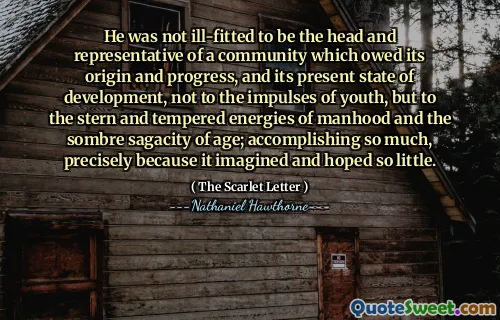It is a curious subject of observation and inquiry, whether hatred and love be not the same thing at bottom. Each, in its utmost development, supposes a high degree of intimacy and heart-knowledge; each renders one individual dependent for the food of his affections and spiritual life upon another; each leaves the passionate lover, or the no less passionate hater, forlorn and desolate by the withdrawal of his object.
In Nathaniel Hawthorne's "The Scarlet Letter," the author presents a thought-provoking perspective on the relationship between love and hatred. He proposes that both emotions may fundamentally share similar characteristics. At their extremes, both love and hate involve a deep connection and understanding of another person, indicating a profound intimacy that impacts one’s emotional well-being.
This intimacy creates a sense of dependency, where individuals look to each other for fulfillment and meaning in their lives. However, the intensity of these feelings becomes evident when one's object of affection or animosity is removed, leaving the lover or hater feeling abandoned and desolate. This suggests that both emotions, while seemingly oppositional, are intertwined in their capacity to profoundly affect a person's existence.






